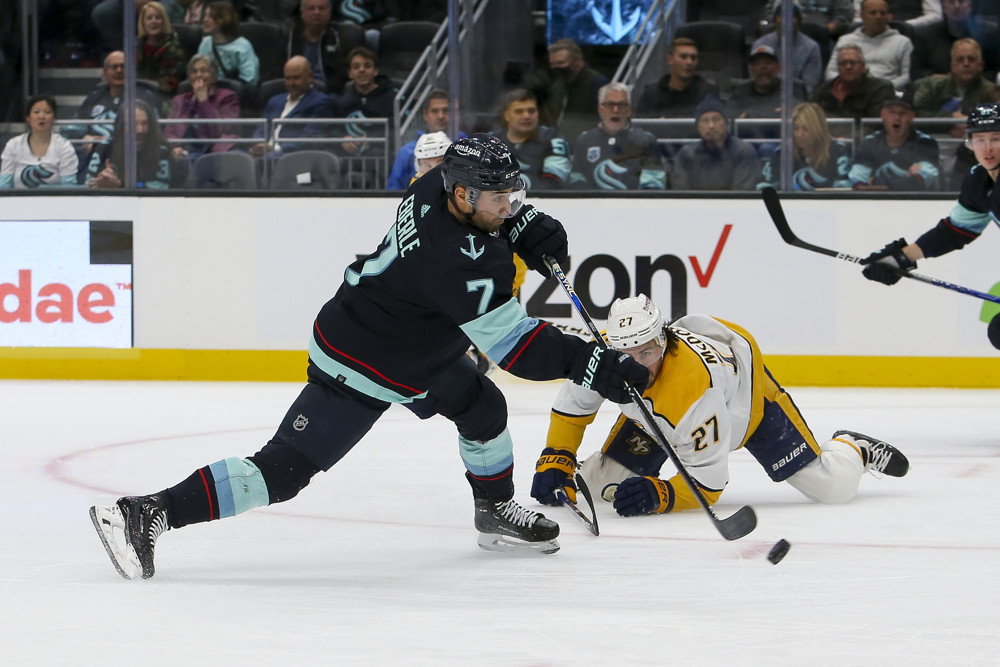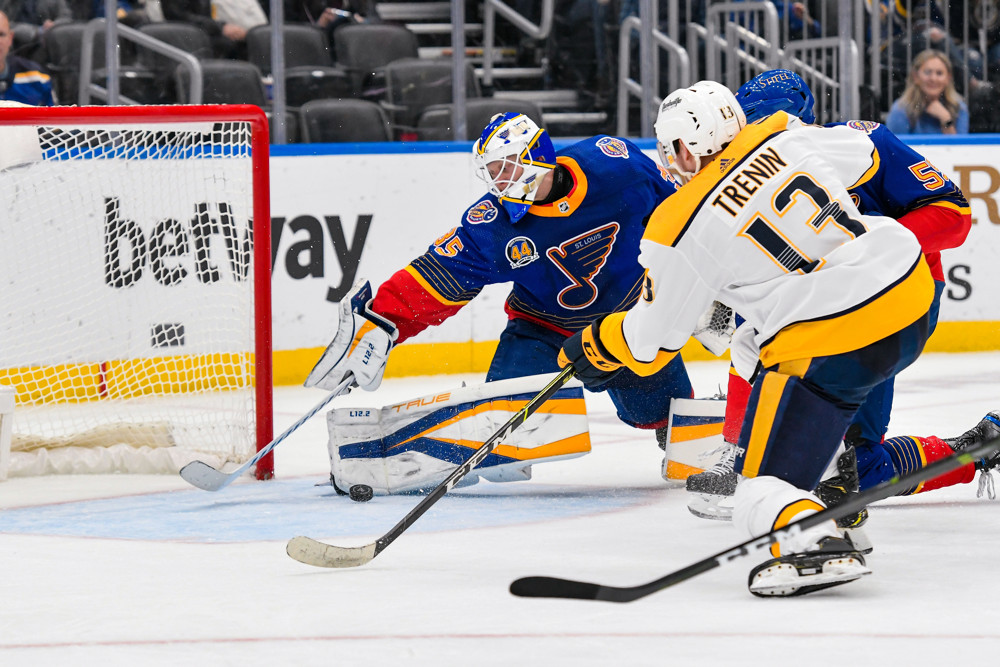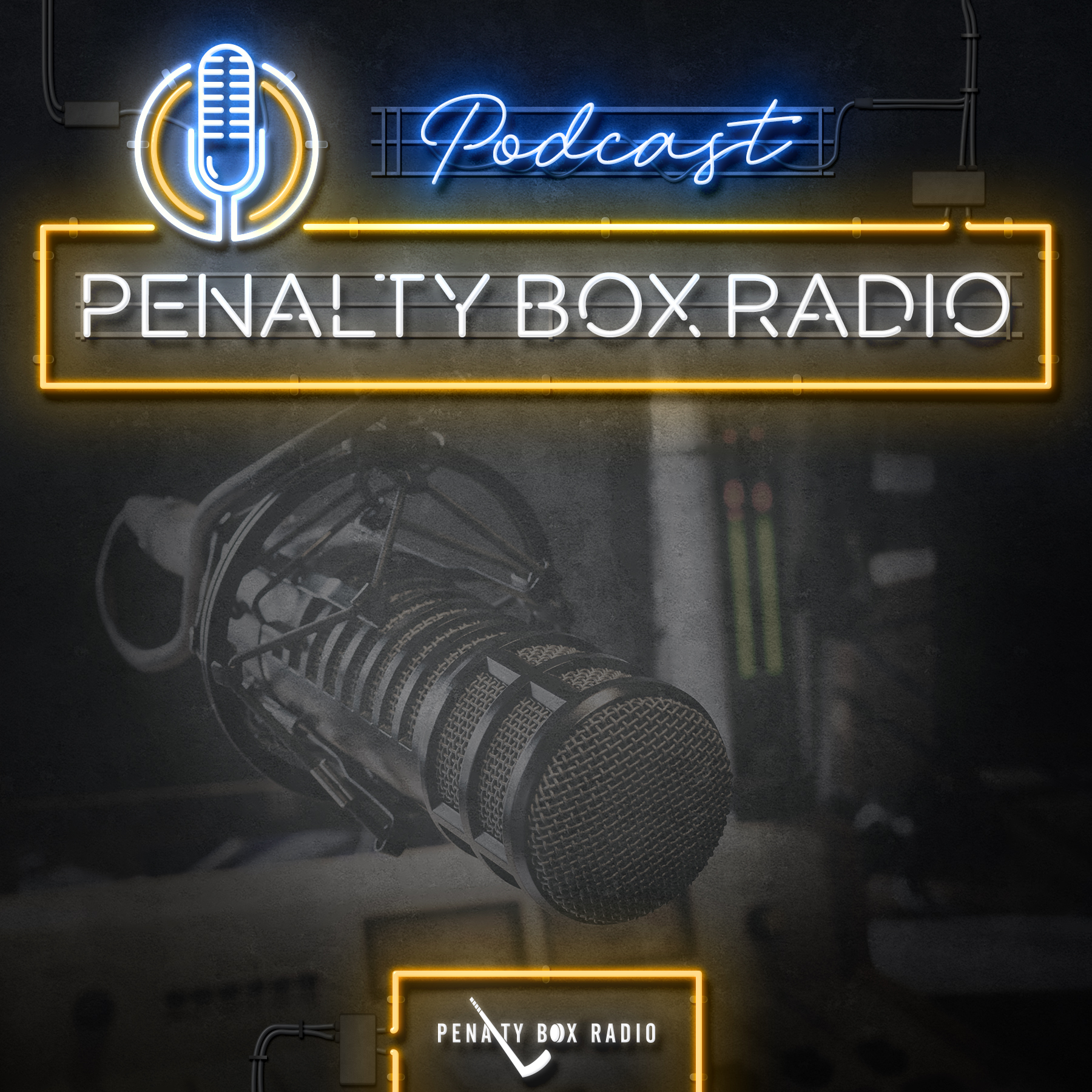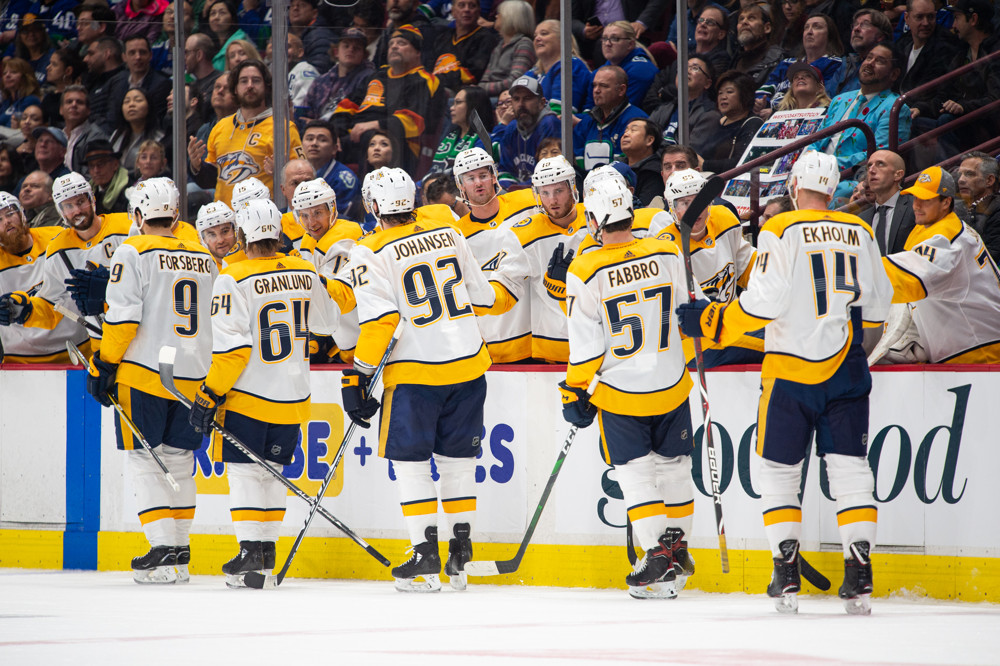
There’s no denying that Nick Bonino has been the hottest Predator of late. He has 10 points in his last 10 games and has already passed last year’s point total (25) by two points with 30 games left in the season.
It seems like everything he touches finds its way into the back of the net, but why? What is Bonino doing that’s causing him to score at an increased rate? And more importantly, is it sustainable? Let’s dive into the stats to find out.
All stats below will only take into account skaters that have played more than 100 minutes.
On Ice Metrics At Five On Five

Bonino currently is in third to last place in terms of Corsi with a less than forgettable 45.60%. Unfortunately, his quality is about as terrible as his quantity, as the Nashville Predators control 45.77% of the scoring chances and 44.88% of the high danger chances when Bonino is on the ice.
Those are objectively terrible numbers, but let’s look a bit deeper. Bonino starts in the offensive zone 25.74% of the time, which is the least amount on the entire club. This stat has given many fans the idea that Bonino is a “defensive specialist” but I’m not sure.

According to Corsica, Bonino’s quality of competition is technically the most difficult among any Predator center, but the differences are miniscule. When looking at Corsi, Bonino’s competition own a 49.94, while Sissons faces off against opponent’s with 49.92 and Johansen’s control a 49.88. Kyle Turris faces the weakest competition, 49.72, but once again, the differences are truly tiny.
Ryan Johansen regularly faces top competition, while Bonino is often left to take on the second or third lines. The issue is that Bonino gets crushed by these middle six units.
Getting The Puck Out
The main job of a defensive specialist is to get the puck out of the defensive zone. How can the other team score when they can’t establish possession? It’s a solid philosophy, in my opinion. So, how does Bonino do at keeping the puck from the making it’s home in the defensive end?
Thanks to the wonderful work by Corey Sznajder and C.J. Turtoro, we can visualize Bonino’s effectiveness.


In terms of exiting the zone, Bonino is doing a better job than last year, but is still doing terribly. He can’t crack into the 15th percentile of the entire league, and it shows. One of my least favorite exercises is to track how many times Bonino’s line gets hemmed in their own zone and how long it takes for them to force a change in possession. More often than not, it ends in a shot on net or a scoring chance.
Bonino fails to enter the zone as regularly as he fails to make an impact once he actually enters the zone. So, if Bonino is often an insignificant factor on the offensive and defensive side of the game, why are things going so well at both ends of the ice?
Luck

According to Corsica, Bonino’s expected goals versus actual goals scored is hilariously out of whack. While at five on five, Bonino has been on the ice for 30 goals for and 13 goals against. Now let’s compare that to his expected goals of 18.2 for and 22.81 against.
Whatever Bonino is doing out there to throw these numbers off, it’s either unquantifiable or he’s getting extremely lucky. My guess is it’s the latter, and to back that up, let’s look at his luck.
Bonino is second on the club in terms of PDO with 106.8, only behind Colton Sissons. The Predators are shooting at 10.64% when Bonino is on the ice, while Pekka Rinne and Juuse Saros are saving 96.17% of the pucks headed their way.
Protecting The High Danger Area
“But maybe that’s Bonino’s genius”, you might think, “maybe Bonino is making it easy for the goalies to save those pucks”. Unfortunately, that’s not the case.

Bonino gives up the third most shot attempts per 60 minutes played, 59.21, but only gives up the ninth most high danger chances against. That’s mostly because he’s .70 per 60 away from second place, and faces lesser competition than the top three, aka the JoFA line. Take a look below to see where the Predators are giving up shots from with Bonino on the ice.

The threat is technically better than the average NHLer’s, but only by a percent. And you can see how the lower slot and net-front are often exploited by the opposition. The worst part for Bonino is that things look no worse or better without him on the ice.

The Predators still give up quite a few shots in prime scoring areas, but it does seem less concentrated than Bonino’s did. Still, due to the excellent work by Micah Blake McCurdy, we know that the Predators are just as average with and without Bonino on the ice.
So, with his “defensive” impact out of the way, let’s talk about what everyone is discussing right now.
Offensive Impact

As I mentioned before, Bonino has been a bit lucky. His team has shot at 10.64% with him on the ice, but we haven’t discussed Bonino’s sole shooting percentage at five on five. He comes in hot with a 18.52%, good for 10 goals on 54 shots and 92 shot attempts.
That’s undoubtedly unsustainably high and there’s no reason to think otherwise. When it comes to players like Alex Ovechkin, they have their once in a generation shot to give credit too, while other players have to rely on attacking the net. Viktor Arvidsson currently has a 20% shooting percentage, but I personally believe that it’s more “sustainable” due to Arvidsson’s ability to take uncontested shots from the high danger area. So let’s see if Bonino is following in Arvidsson’s footsteps.

The answer is no. The fact is that Bonino and his line don’t really produce any shots from the high danger area, except a little tiny bit by the side of the net.
I hate to say it, but the top of the left circle and right side along the hash marks are not high probability scoring areas. Nothing that Bonino or his linemates are doing show that this is sustainable in any way, shape, or form.
What Does This Mean?

I like Nick Bonino and I’m happy he’s scoring but it feels like we’re ignoring every other aspect of his game. He hasn’t exactly been good this season and the Predators are spending four million dollars on a forward that is widely considered to be a replacement level player.
That said, I’m not sure Bonino is the problem. I think he’s being misused and would play better if the other three lines helped carry the load of defensive zone starts. I don’t believe that he’ll ever be worth four million dollars, but if used better, I think he could at least be above replacement level.









